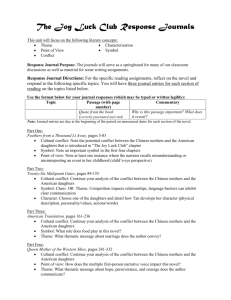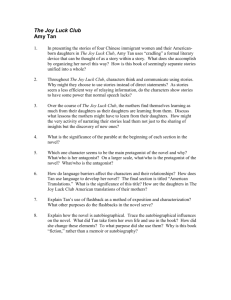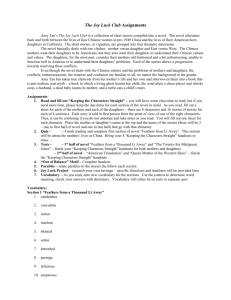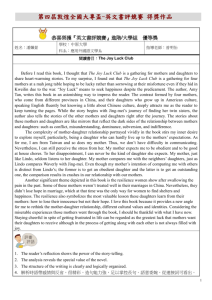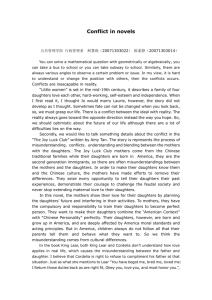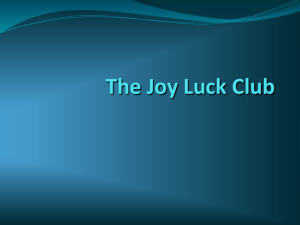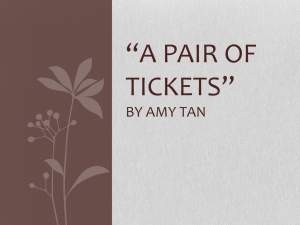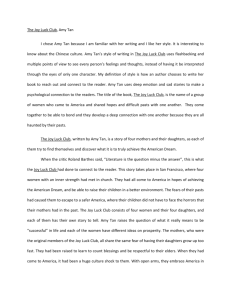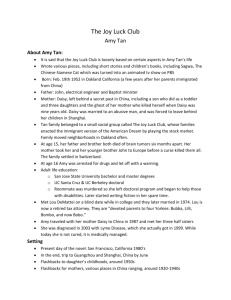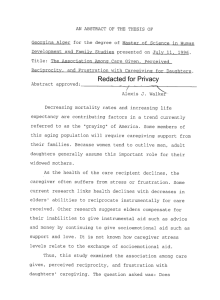joy luck club38.cdr
advertisement
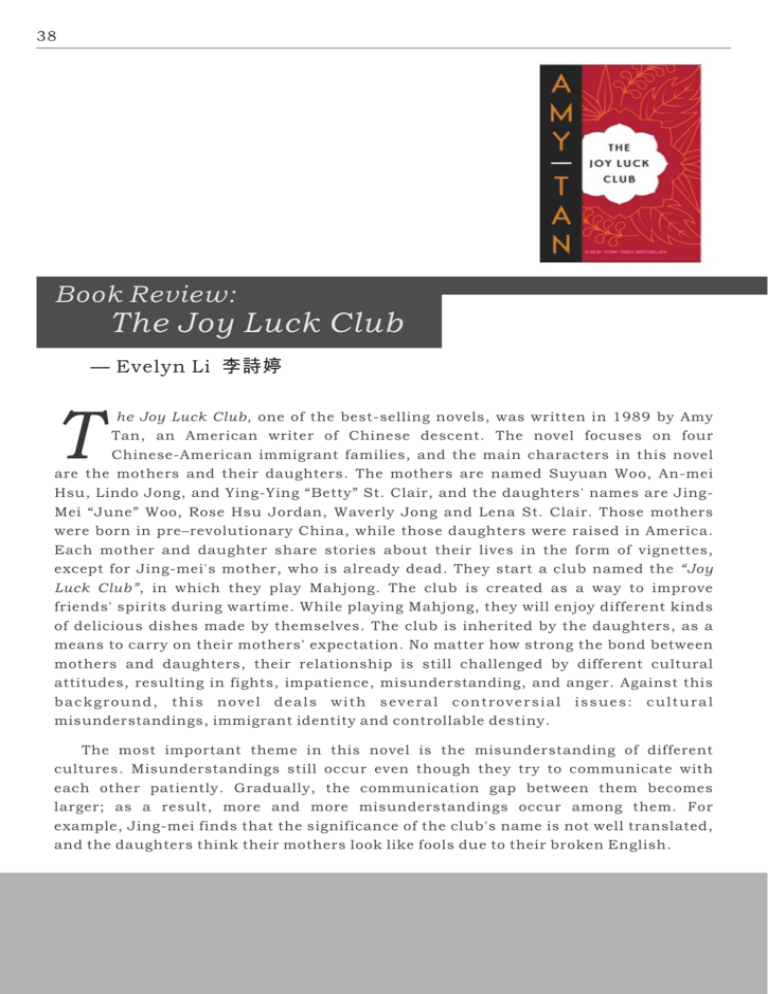
38 Book Review: The Joy Luck Club — Evelyn Li 李詩婷 T he Joy Luck Club, one of the best-selling novels, was written in 1989 by Amy Tan, an American writer of Chinese descent. The novel focuses on four Chinese-American immigrant families, and the main characters in this novel are the mothers and their daughters. The mothers are named Suyuan Woo, An-mei Hsu, Lindo Jong, and Ying-Ying “Betty” St. Clair, and the daughters' names are JingMei “June” Woo, Rose Hsu Jordan, Waverly Jong and Lena St. Clair. Those mothers were born in pre–revolutionary China, while those daughters were raised in America. Each mother and daughter share stories about their lives in the form of vignettes, except for Jing-mei's mother, who is already dead. They start a club named the “Joy Luck Club”, in which they play Mahjong. The club is created as a way to improve friends' spirits during wartime. While playing Mahjong, they will enjoy different kinds of delicious dishes made by themselves. The club is inherited by the daughters, as a means to carry on their mothers' expectation. No matter how strong the bond between mothers and daughters, their relationship is still challenged by different cultural attitudes, resulting in fights, impatience, misunderstanding, and anger. Against this background, this novel deals with several controversial issues: cultural misunderstandings, immigrant identity and controllable destiny. The most important theme in this novel is the misunderstanding of different cultures. Misunderstandings still occur even though they try to communicate with each other patiently. Gradually, the communication gap between them becomes larger; as a result, more and more misunderstandings occur among them. For example, Jing-mei finds that the significance of the club's name is not well translated, and the daughters think their mothers look like fools due to their broken English. 39 Apart from the cultural misunderstanding, the second issue in this novel focuses on the identities of the daughters. The appearances of the daughters are apparently oriental; however, they do not want to admit to this reality. Instead, they believe they are Americans since they are growing up in the American culture. Nevertheless, they know they are in a conflicting situation as they grow up—they are neither Chinese nor American. After the issue of identity, I would like to talk about the last issue, the destiny. The Chinese mothers always obey the fate because they do not want to violate destiny. They are deeply influenced by fatalism, namely, doing everything according to the arrangements by God. The daughters, on the contrary, think they have the power and right to seek whatever they want. For those daughters, it is ridiculous to follow the destiny all the time if they are capable of changing it. In conclusion, misunderstandings across different cultures, identities of the immigrants and destiny are the three major topics of this novel, which appears most interesting to me. I recommend this book because it reflects these controversial issues in our lives. Besides, it also invites us to a retrospect on our doings in the past, and helps us appreciate what we have now and realize how fortunate we are living in this open society. (The Joy Luck Club/Amy Tan/Oxford: Oxford University Press, 2008, 120 pp)
